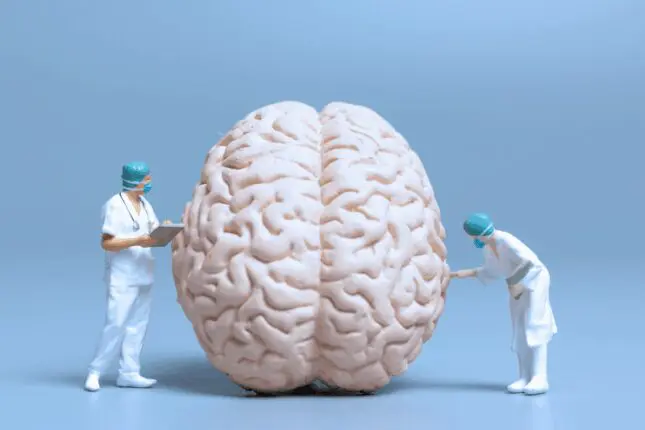What we clinicians have learned in recent years about the intricacies of the brain’s implicit memory systems has certainly helped us better recognize the linkage between distressing or traumatic experiences and many of the previously puzzling symptoms clients bring to our offices. But now brain science is beginning to offer more specific and powerful guidance about clinical methods that can help free clients from the emotional distress and problematic behaviors triggered by disturbing implicit memories.
These days, more and more therapists have moved from simply talking about emotional issues and the past to using experiential approaches based on the recognition that implicit memory is living memory. But once a client has achieved direct access to the raw living memory of difficult or traumatic experiences, how do we know what to do next to resolve those memories? And what does “resolving” such memories actually mean? Most clinicians are all too aware that implicit memory often maintains an emotional chokehold, even after it’s become conscious. Yet sometimes we do see our clients experience a deep, liberating, lasting shift, after which their behavior changes and their mood vastly improves. The only problem is that we often don’t know why or how this shift happened.
At the end of the 1990s, a major turnaround in that viewpoint began. Researchers in three different labs had resumed studying the effects of reactivating an implicit memory. Thanks to sophisticated new techniques combined with the field’s advanced knowledge of exactly where in the brain certain memories form, these neuroscientists were able to determine that what makes a reactivated memory briefly dissolvable is an actual, if temporary, unlocking of synapses. In one study, researchers first trained mice to respond with fear to an auditory tone by pairing the tone with an unpleasant stimulus. Then they waited one day, enough time for full consolidation of the fear memory circuit. After reactivating the fear memory by playing the tone, the memory-bearing part of each mouse’s amygdala was doused promptly with anisomycin, a chemical that precisely blocks the production of proteins necessary for consolidation of a memory circuit. When the tone was subsequently played, the mice no longer responded with fear. The implicit memory was gone. But if anisomycin was applied without first replaying the tone to reactivate the memory, the memory was left intact, and the fear response continued. The fact that a consolidation-blocking chemical could erase an already consolidated, reactivated implicit memory meant that reactivation had caused the memory to deconsolidate. This in turn implied that a reactivated deconsolidated memory undergoes a natural process of reconsolidation, which soon relocks the synapses and returns the memory to long-term durability.
This time, the neuroscience field took notice. The number of articles and conference presentations on reconsolidation and its memory-dissolving disruption has grown exponentially since then.
Further research has established that in order for synapses to unlock, the brain requires not just the experience of reactivation of the memory—it’s also necessary for a second, critical experience to promptly take place while the memory reactivation experience is still occurring. That second experience consists of perceptions that sharply contradict and disconfirm the implicit expectations of the reactivited memory.
These studies and others by neuroscientists at many different labs have established that the unwiring of implicit memory occurs through a type of neuroplasticity that’s “experience-driven,” and they’ve articulated the procedural, experiential steps that the brain requires for an implicit memory to be unwired: (1) Fully reactivate the target implicit memory so that the emotional experience is occurring; (2) While the target memory is fully reactivated and the emotional experience is occurring, promptly create an additional, concurrent experience that sharply mismatches (contradicts and disconfirms) the expectations and predictions arising from the implicit memory.
My clinical experience has taught me that it’s usually a mistake to assume that a disconfirming experience automatically transforms a client’s implicit material. Change becomes much more reliable when we take the additional step of creating a juxtaposition experience: guiding the client to attend to both the retrieved material and the disconfirming experience all at once. After all, step two requires concurrent experiences, and that rule of the brain has to be fulfilled thoroughly. In a juxtaposition experience, the client is emotionally in touch with the retrieved material and with a sharply contradictory experience simultaneously. Both feel real, yet both can’t possibly be true. It’s an experiential form of cognitive dissonance with a unique, peculiar feeling. Both sides need to be emotionally rich and real, not just cognitive insights or talk.
When dissolution is successful, clients often express a kind of gleeful laugh and view the old, tormented reaction as amusing or absurd. The effortlessness of remaining free of the original emotional and behavioral symptoms is another marker that’s regularly apparent and suggestive of actual unwiring.
The brain’s power to restore a person’s distressed emotional world to well-being is far greater than we once knew, and we’re learning more about that capacity all the time. I have no doubt that the most significant development in the evolution of our clinical methods depends on the continuing synthesis of clinical and neurodynamic knowledge. Regularly and predictably helping clients have breakthrough moments will become increasingly likely as we learn more and more about how to cooperate knowingly with the rules of change inherent in the brain.
Bruce Ecker
Bruce Ecker, MA, LMFT, is codirector of the Coherence Psychology Institute, co-originator of Coherence Therapy, and coauthor of Unlocking Emotional Brain and Depth Oriented Brief Therapy.













